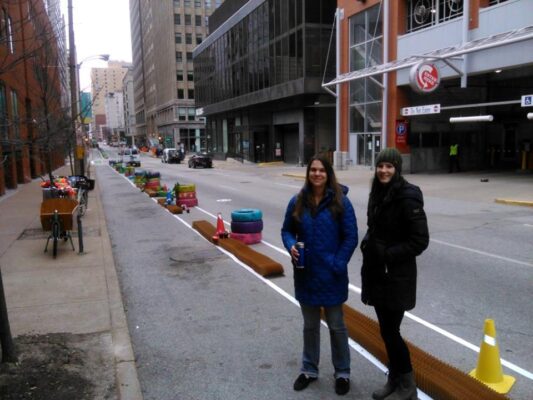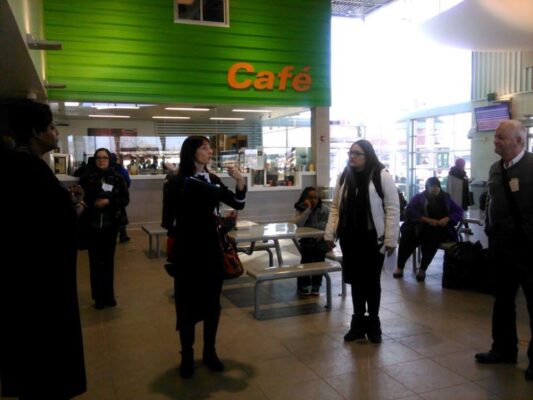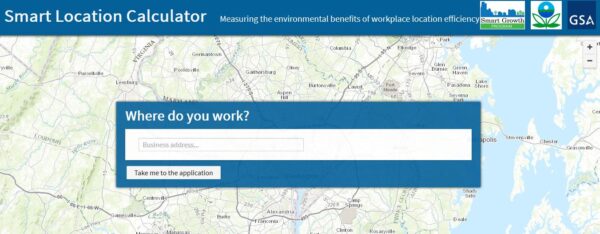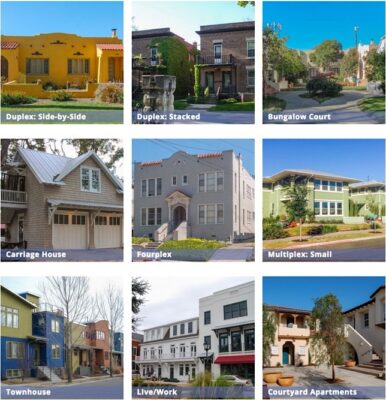What we learned at the new Partners for Smart Growth Conference
Over the past 15 years the New Partners for Smart Growth has become the largest and most comprehensive sustainable communities conference in the nation. Two of our staff, Meg Fencil (Program Director) and Branyn Calegar (Community Outreach Coordinator) traveled to St. Louis for the 3-day conference and learned a lot about sustainable growth!
Here are some key principles that we think Charlotte would benefit from:
Demonstration projects are powerful!
We arrived just in time to visit the final hour of a demonstration protected bike lane hosted by St. Louis’ local sustainable transportation advocacy organization Trailnet. Charlotte should continue to invest in demo events like Open Streets 704 and protected bike lane demos because these are powerful tools that allow the public to really experience how our streets could be used differently to benefit all people. Of course, it’s important to not let the demonstration become and end in and of itself. A good demo project is a step towards building public support for a more permanent solution.

Trailnet’s demo bike lane used simple, colorful materials to provide cyclists with separation from cars.
Better transit networks can boost social equity!
For decades, segregation, residential filtering and economic decline have increased concentrations of lower-income minority households across North County (home to St. Louis and 90 other municipalities). During a fantastic guided bus tour, staff from the Metro transit agency and several local advocacy organizations explained how transit service is helping to solve disparate access to opportunity within the region. The new North County Transit Center is a prime example. It provides a comfortable and dignified transfer experience for riders, with a climate controlled waiting area, restrooms, and a small cafe. On-site transit managers are available to speak directly with riders about their concerns. This has all resulted in a much better customer experience for riders.
As CATS begins to completely redesign Charlotte’s bus network, we have a lot of opportunities to create and revitalize transfer areas where routes will connect. Let’s focus on providing a world-class experience for bus riders as they wait for the bus!

Metro’s staff spoke about how the new transit center’s customer-service approach is winning trust from bus riders.
There’s a powerful new tool to identify sustainable workplace locations!
As our cities become more congested, it’s increasingly important for employers to consider not only the sustainability of the workplace building itself, but also the sustainability of their employees’ commutes. The new Smart Location Calculator is a powerful new tool to evaluate the sustainability potential of workplace siting. Try using the calculator yourself to assess the relative location efficiency of various sites within our region.

Enter an address to the Smart Growth Calculator to see how sustainable its location is!
Cities can address affordable housing challenges by focusing on eliminated barriers to missing middle housing.
Missing middle housing is defined as medium-density, but still house-scale, buildings that have multiple units in them such as duplexes, fourplexes and bungalow courts.

Missing middle’ housing can help create and retain affordable housing options in walkable areas.
Charlotte is one of many cities across the U.S. that is dealing with housing challenges, especially affordability. As the demand grows for walkable neighborhoods and housing near connected to a variety of transportation options, affordable housing in these areas becomes harder to find.
How are cities addressing this problem?

Missing middle’ housing can help create and retain affordable housing options in walkable areas.
One of the most popular ways cities are removing zoning and regulatory barriers that hinder the development of missing middle housing is by implementing a form-based code as part of their UDO (Unified Development Ordinance). A form-based code, in contrast to a single-use zoning code, is a land development regulation that fosters predictable built results and a high-quality public realm by using physical form (rather than separation of uses) as the organizing principle for the code.
The City of Charlotte has recently begun the process of updating our land-use policies and development ordinances by creating a Charlotte Place Types & Unified Development Ordinance (UDO). This comprehensive plan will the shape the future growth of our city is likely to include elements form-based. Learn more about this process and how YOU can be involved here!
To learn more about missing middle housing, visit: missingmiddlehousing.com
Thanks for reading!
As a nonprofit, community support is essential for us to keep doing what we do — including providing free articles like this. If you found this article helpful, please consider supporting Sustain Charlotte.
Want to stay in the loop? Subscribe to our weekly newsletter and follow us on Instagram, Facebook, and Twitter.
